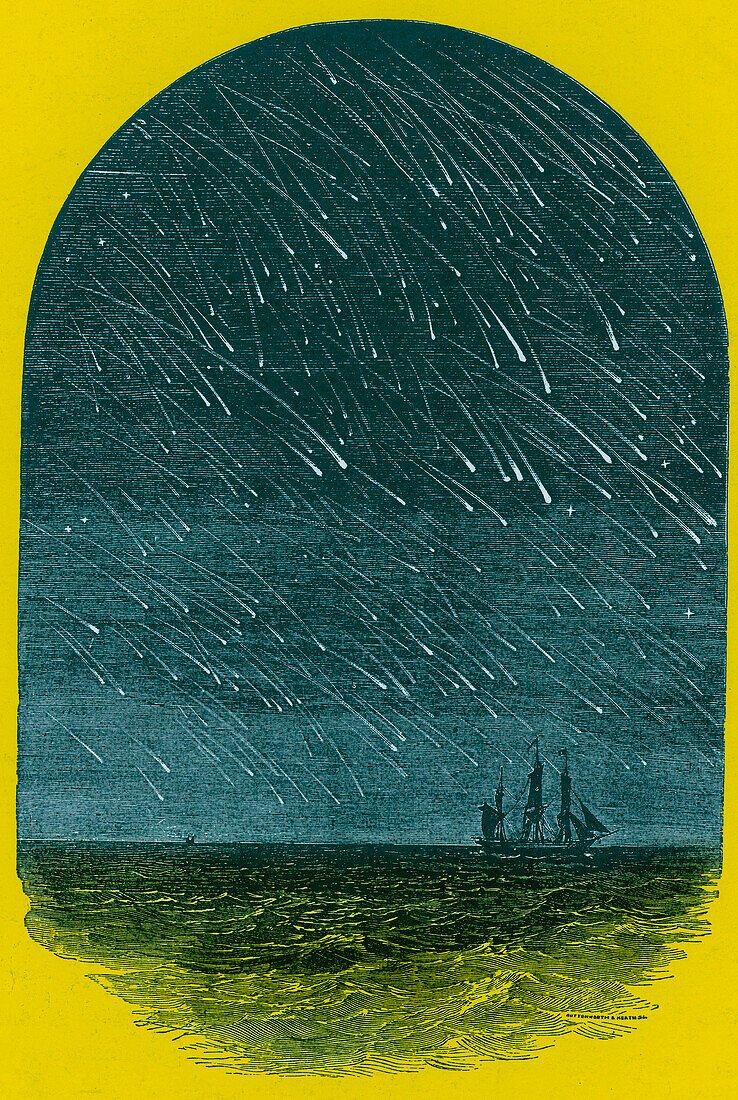Leonid meteor shower, 1799
Bildnummer 13501381

| As astronomers began to explore the physical nature of comets, they found that meteors came from dust left by comets. A meteor shower is a celestial event in which a number of meteors are observed to radiate, or originate, from one point in the night sky. These meteors are caused by streams of cosmic debris called meteoroids entering Earth's atmosphere at extremely high speeds on parallel trajectories. Most meteors are smaller than a grain of sand, so almost all of them disintegrate and never hit the Earth's surface. Major meteor showers such as the Leonids, seen here as they appeared on November 12, 1799, occurred as Earth ploughed through a river of comet dust. The Leonid meteor shower peaks around November 17 of each year. Approximately every 33 years, the Leonid shower produces a meteor storm, peaking at rates of thousands of meteors per hour. Leonid storms gave birth to the term meteor shower when it was first realized, during the November 1833 storm, that the meteors radiated from near the star Gamma Leonis. The last Leonid storms were in 1999, 2001 (two), and 2002 (two). Before that, there were storms in 1767, 1799, 1833, 1866, 1867, and 1966. (From the Midnight Sky, by Edwin Dunkin, 1869). | |
| Lizenzart: | Lizenzpflichtig |
| Credit: | Science Photo Library / New York Public Library |
| Bildgröße: | 3455 px × 5149 px |
| Modell-Rechte: | nicht erforderlich |
| Eigentums-Rechte: | nicht erforderlich |
| Restrictions: | - |
Preise für dieses Bild ab 15 €
Universitäten & Organisationen
(Informationsmaterial Digital, Informationsmaterial Print, Lehrmaterial Digital etc.)
ab 15 €
Redaktionell
(Bücher, Bücher: Sach- und Fachliteratur, Digitale Medien (redaktionell) etc.)
ab 30 €
Werbung
(Anzeigen, Aussenwerbung, Digitale Medien, Fernsehwerbung, Karten, Werbemittel, Zeitschriften etc.)
ab 55 €
Handelsprodukte
(bedruckte Textilie, Kalender, Postkarte, Grußkarte, Verpackung etc.)
ab 75 €
Pauschalpreise
Rechtepakete für die unbeschränkte Bildnutzung in Print oder Online
ab 495 €
